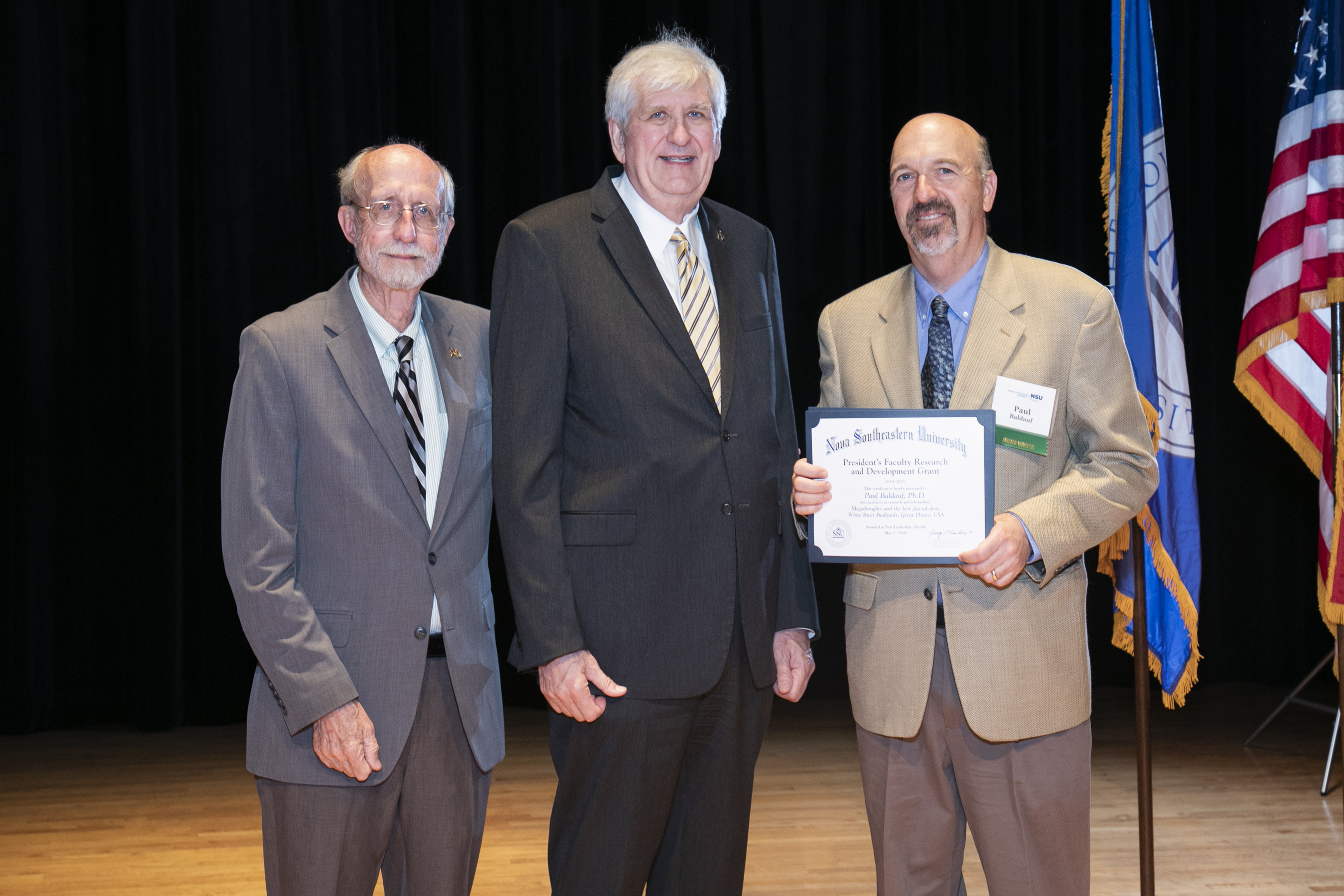Megadroughts and the last glacial dust, White River Badlands, Great Plains, USA
Grant Winners
- Paul Baldauf, Ph.D. – Halmos College of Oceanography and Natural Sciences
- Dana Foresman – Halmos College of Oceanography and Natural Sciences
- Dr. Patrick Burkhart – Slippery Rock University
- Dr. Greg Baker – University of Kansas and Geoavatar, Inc.
- Dr. Allen Gontz – San Diego State University
Dean
- Richard Dodge, Ph.D. – Halmos College of Oceanography and Natural Sciences
Abstract
 Histories of dune field activity provide important information on regional and global climate change. While dune fields are complex systems, generally they are active during periods of prolonged drought; thus, evidence of prehistoric dune activity can be used to construct chronologies of ancient changes in climate. Interest in the climate history of the Great Plains is high because: 1) little is known about the climate of the Great Plains prior to the arrival of homesteaders 200 years ago, 2) scientists predict that the risk of drought risk will increase dramatically this century as the Earth grows warmer, and 3) future drought on the Great Plains would disrupt one of the most productive agricultural areas in the United States. The White River Badlands (WRB), located in the northern Great Plains, is important because the rocks exposed there are thought to be the source of the Peoria Loess, a regionally significant deposit of dust on the central Great Plains and Central Lowlands of North America. The goal of this proposed study is to test the hypothesis that WRB dunes were a source of the Peoria Loess, using sedimentological and geochemical analyses of dune sands. The result of this investigation will be a characterization of the mineralogical and geochemical composition of dune sands for comparison with previously published Peoria Loess compositions. Improvements to the NSU Systems Biology and Geology Laboratory proposed
Histories of dune field activity provide important information on regional and global climate change. While dune fields are complex systems, generally they are active during periods of prolonged drought; thus, evidence of prehistoric dune activity can be used to construct chronologies of ancient changes in climate. Interest in the climate history of the Great Plains is high because: 1) little is known about the climate of the Great Plains prior to the arrival of homesteaders 200 years ago, 2) scientists predict that the risk of drought risk will increase dramatically this century as the Earth grows warmer, and 3) future drought on the Great Plains would disrupt one of the most productive agricultural areas in the United States. The White River Badlands (WRB), located in the northern Great Plains, is important because the rocks exposed there are thought to be the source of the Peoria Loess, a regionally significant deposit of dust on the central Great Plains and Central Lowlands of North America. The goal of this proposed study is to test the hypothesis that WRB dunes were a source of the Peoria Loess, using sedimentological and geochemical analyses of dune sands. The result of this investigation will be a characterization of the mineralogical and geochemical composition of dune sands for comparison with previously published Peoria Loess compositions. Improvements to the NSU Systems Biology and Geology Laboratory proposedill improve our ability to generate data for this and future studies, and will create opportunities for further faculty-student research collaborations.